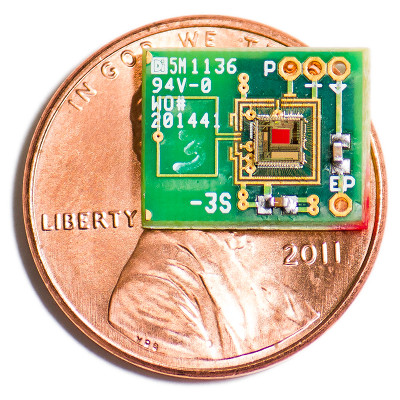MIT creates an implant using an ear snail instead of a battery
 The cochlea is a part of the inner ear in the form of a spiral divided into cavities. The cavities contain liquids with a high concentration of sodium and potassium ions, which create an electrical potential on the membrane separating the cavity when sound vibrations are transmitted to the cochlea. Scientists from the combined team at the Massachusetts Institute of Technology, the Massachusetts Eye and Ear Clinic, and Harvard University were able to use this potential to provide power to the microelectronic device without disturbing the patient’s hearing.
The cochlea is a part of the inner ear in the form of a spiral divided into cavities. The cavities contain liquids with a high concentration of sodium and potassium ions, which create an electrical potential on the membrane separating the cavity when sound vibrations are transmitted to the cochlea. Scientists from the combined team at the Massachusetts Institute of Technology, the Massachusetts Eye and Ear Clinic, and Harvard University were able to use this potential to provide power to the microelectronic device without disturbing the patient’s hearing.Such implants can be used to monitor the condition of the ear and to treat hearing or vestibular disorders. The need to exclude the possibility of the implant affecting the hearing imposes very severe restrictions on the energy consumption of the device - the implant can use only a tiny fraction of the energy of an already not too powerful “battery”. Therefore, it uses extraordinary technical solutions.
The implant contains a radio transmitter to transmit the collected data for processing. It is impossible to power it directly from the membrane of the cochlea: neither voltage nor power is enough. To get around this limitation, a “power supply” is used, which gradually charges the capacitor. This process takes from 40 seconds to 4 minutes. When enough energy is accumulated, the device communicates, broadcasting a packet of data collected during this time.
Another problem - not only the transmitter, but in general the entire implant electronics is not enough for the normal operation of the voltage produced by the cochlea. If the capacitor discharges below a certain limit, the device will not be able to start by itself. Therefore, an external radio frequency pulse is used for a “cold start”.
“We have known for 60 years about the existence of a biological battery in the inner ear and its role in human hearing, but so far no one has tried to use its energy to power electronic devices,” says Konstantina Stankovich, otolaryngologist at the eye and ear problems clinic.
Scientists conducted a series of experiments on guinea pigs, during which electrodes were implanted on both sides of the membrane in the inner ear of animals. The devices themselves, powered by them, were outside, but their size allows you to place them in the cavities of the middle ear of a person. No hearing impairment was detected in guinea pigs during the operation of the implants.
Source: MIT .
